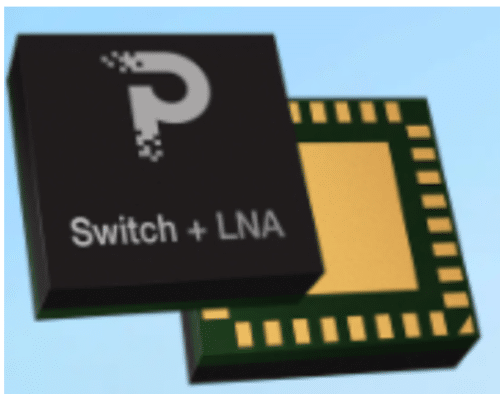The multi-chip module features dual-channel switches and low noise amplifiers, designed for 3.3–3.8 GHz frequencies and streamlined for wireless infrastructure, including 5G systems.

pSemi Corporation, a subsidiary of Murata specializing in semiconductor design and integration, has unveiled a multi-chip module, the PE53230. The module is designed for frequencies ranging from 3.3 GHz to 3.8 GHz and includes dual-channel switches and two low-noise amplifiers (LNAs) for high- and low-band frequencies. The modules have a noise figure below 1 dB, enhancing receiver sensitivity and performance. It can handle 20W average input power, simplifying design by eliminating the need for external circuitry.
The module is suited for wireless infrastructure applications, including TDD-LTE macro and micro cells, 5G massive MIMO systems, and TDD-based communication systems. They offer gain and consistent gain flatness, ensuring reliable operation under high-power signals. This feature is essential for maintaining failsafe operation. The modules also improve receiver channel sensitivity due to their low noise figures. Their linearity (IIP3) combined with low power consumption makes them integrated solutions that streamline system design, as they do not require external matching networks.
The module comes in a 6×6mm LGA package and boasts a gain exceeding 36 dB and a swift switching time of under 600 nanoseconds. It is efficient in terms of power usage, consuming less than 500mW per channel, and is notable in the industry for its ability to handle a high average input power of 20W.
Some of the key features of the PE53230 include:
- Integrates dual-channel LNA with bypass function
- and a high-power switch
- 20W average RF input power
- The low noise figure of 0.9 dB
- 37 dB gain at max gain mode
- 32 dBm OIP3
- +105 °C operating temperature
- Packaging – 40-lead 6 × 6 mm LGA
“We are proud to set the record with the lowest noise figure the industry has ever seen, delivering better receiver sensitivity and higher performance for our customers’ systems. By providing MIMO architecture with the highest level of integration of the receiver front end, we achieve high power handling, high linearity, and low noise figure for 5G mMIMO active antenna systems – helping advance the entire wireless ecosystem.” Vikas Choudhary, VP of global sales, marketing and system engineering, pSemi.
For more information, click here.






